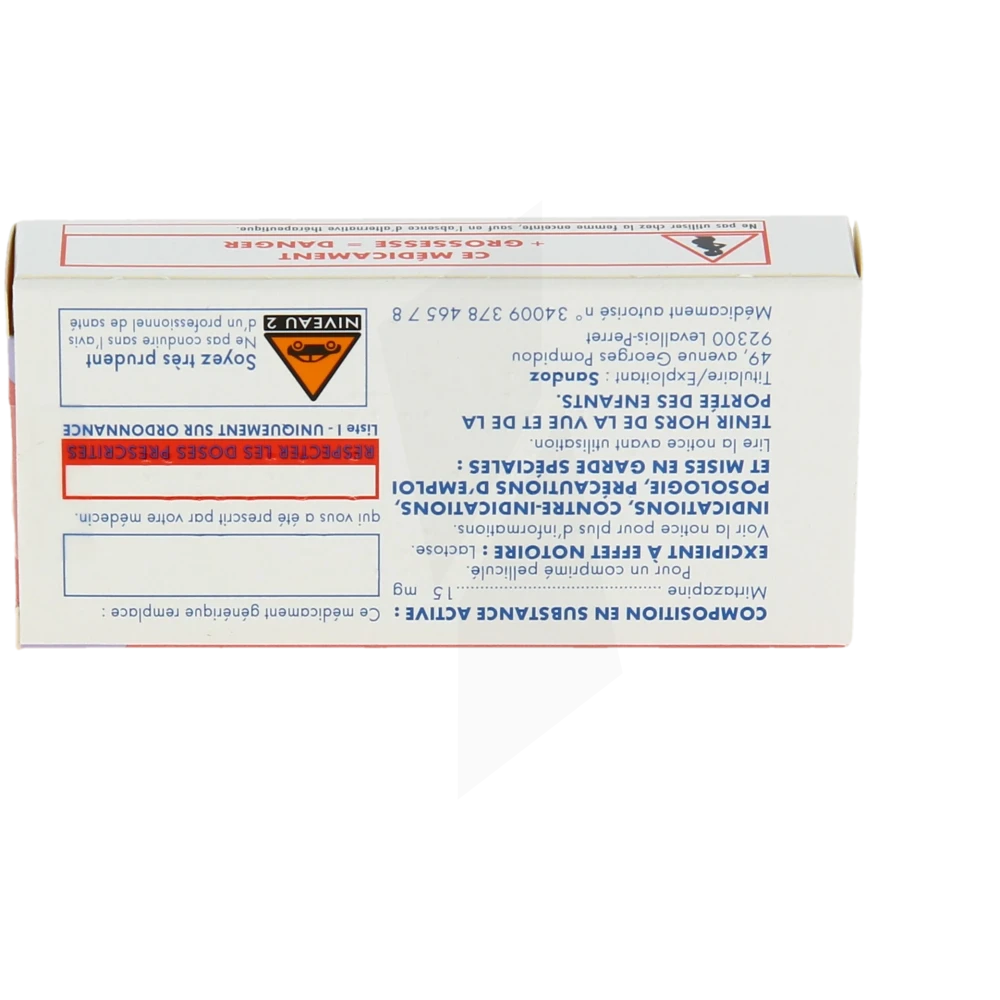Mirtazapine is a medication often prescribed to treat major depressive episodes. Although it may prove effective, it is essential to be aware of its side effects and contraindications. Among the common side effects, one finds drowsiness, weight gain, and gastrointestinal disorders. Moreover, certain medical conditions may require special precautions during the prescription of this treatment. A thorough understanding of these aspects ensures a safe and appropriate use of mirtazapine.

Mirtazapine is an antidepressant often prescribed for the treatment of major depressive episodes. Its classification as a sedative antidepressant makes it particularly effective for patients suffering from mood disorders associated with anxiety and sleep disturbances. Nevertheless, like any medicinal treatment, mirtazapine does not come without side effects and necessary precautions regarding its prescription.
Side Effects of Mirtazapine
When a patient begins to take mirtazapine, it is crucial to be aware of potential adverse effects. The most frequently reported side effects include drowsiness, which can hinder daily activities such as driving or exercising. In fact, this daytime drowsiness is often attributed to the sedative effect of the medication on the central nervous system.
Other common adverse effects also include weight gain, dry mouth, gastrointestinal disorders such as nausea or constipation, and headaches.
It is fundamental for patients to report any persistent or severe effects to their doctor. Indeed, some side effects, although less frequent, may include symptoms such as anxiety and sleep disorders, which can counteract the benefits of the treatment initially sought.
Contraindications for Mirtazapine Prescription
The prescription of mirtazapine must be done with caution. Certain medical conditions may constitute contraindications to its use. For example, in patients with renal or hepatic insufficiency, dose adjustments may be necessary to avoid accumulation of the medication in the body, which could worsen side effects.
Furthermore, it is important to consider the medical history of patients, particularly in cases of epilepsy, diabetes, cardiovascular diseases, or orthostatic hypotension. In some of these situations, the risks may outweigh the benefits of the treatment, making mirtazapine inappropriate.
Children under the age of 18 should also be particularly monitored when prescribing mirtazapine. Clinical studies show that this age group may be more susceptible to experiencing adverse effects, including a rise in blood triglycerides and the occurrence of hives. Therefore, it is essential to conduct a thorough assessment of the risks and benefits before initiating treatment.
Finally, additional precautions may apply to patients with closed-angle glaucoma or prostate adenoma, where the sedative and anticholinergic properties of mirtazapine could exacerbate their respective conditions.
In summary, while being an effective antidepressant agent, mirtazapine requires meticulous evaluation of side effects and contraindications before prescription. Physicians must stay updated on the latest research and guide their patients through the complexities of their treatment.
For more details regarding mirtazapine, you can consult the following links: mirtazapine 15 mg – side effects, patient leaflet, and indications and effects.

FAQ on Medical Prescription of Mirtazapine: Side Effects and Contraindications
A: Mirtazapine is primarily used as an antidepressant to treat major depressive episodes.
A: Common side effects include drowsiness, weight gain, dry mouth, constipation, and fatigue.
A: In children under 18 years old, effects such as significant weight gain, hives, and an increase in blood triglycerides have been observed during clinical studies.
A: It is important to report any serious adverse effect such as a feeling of euphoria or hyperactivity, especially in patients with a history of mood disorders.
A: Precautions are necessary in cases of renal insufficiency, hepatic insufficiency, diabetes, epilepsy, cardiovascular diseases, or orthostatic hypotension.
A: The effects of mirtazapine generally begin to appear after 1 to 2 weeks of treatment, with a positive response expected in 2 to 4 weeks if the dosage is appropriate.













